Baidu Monthly Search Volume Historic Trends Now Available in Dragon Metrics
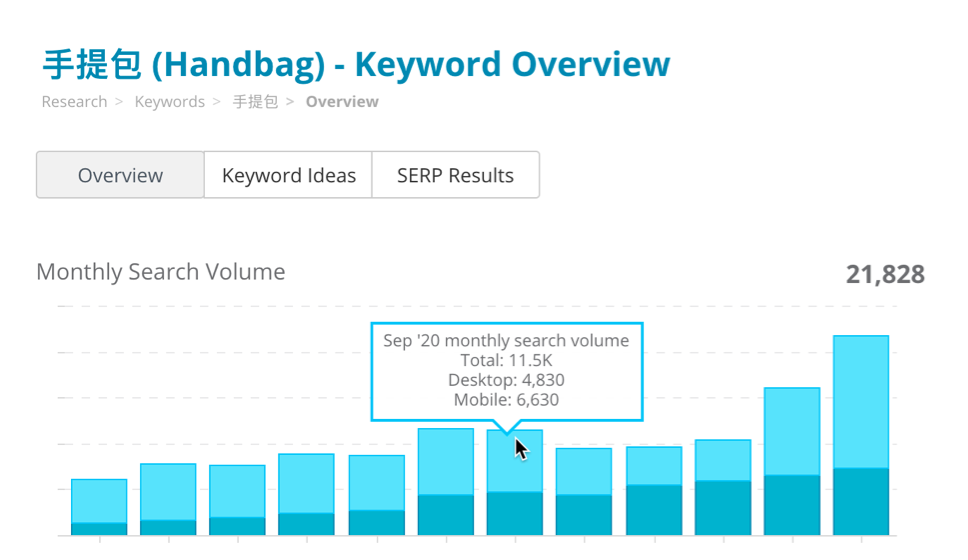
*To the best of our knowledge!
We’re excited to announce today that for the first time ever anywhere on the web, Dragon Metrics now provides the most recent 12 months of monthly search volume (MSV) trended data on Baidu.
For our customers interested in China this has been the most requested feature for quite some time, and it’s finally here.
We’ve added search volume histories to almost all places in the platform where a single-month MSV existed previously. Let’s take a look at some of the places you’ll see this data in Dragon Metrics.
MSV trends split by desktop and mobile are shown for the seed keyword on Baidu keyword research queries.
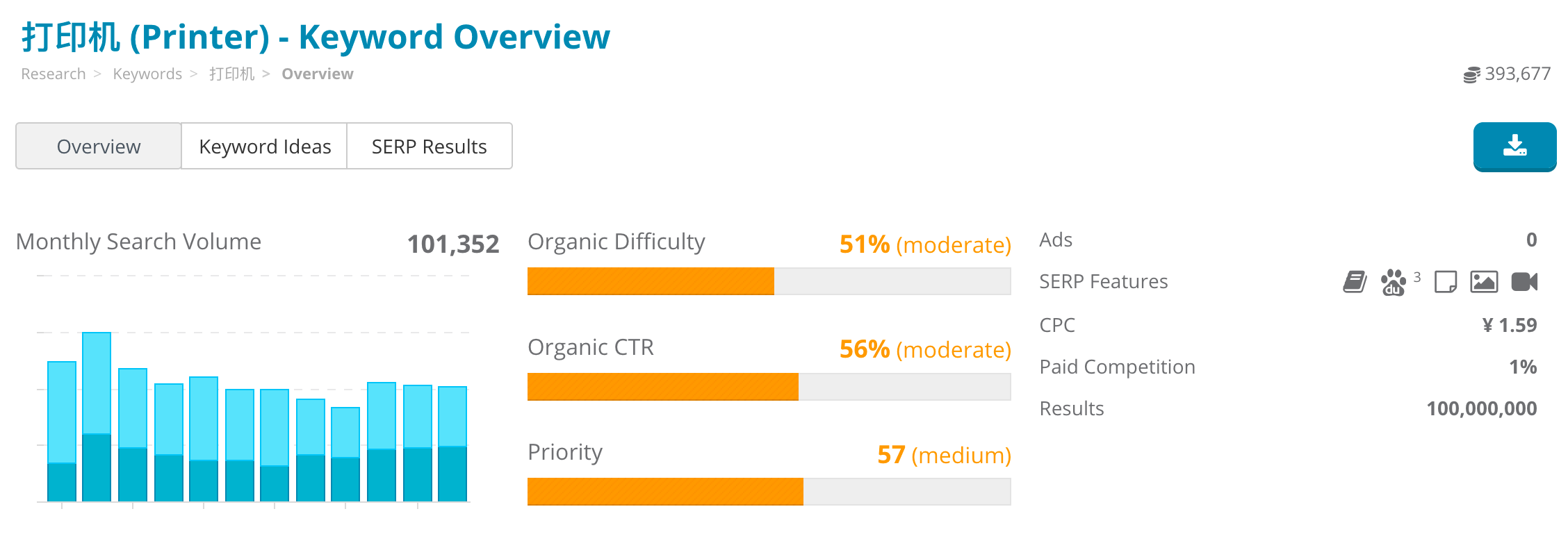
Total MSV trend will be shown for all keyword ideas from our database. (Individual device trends available in the Excel exports).
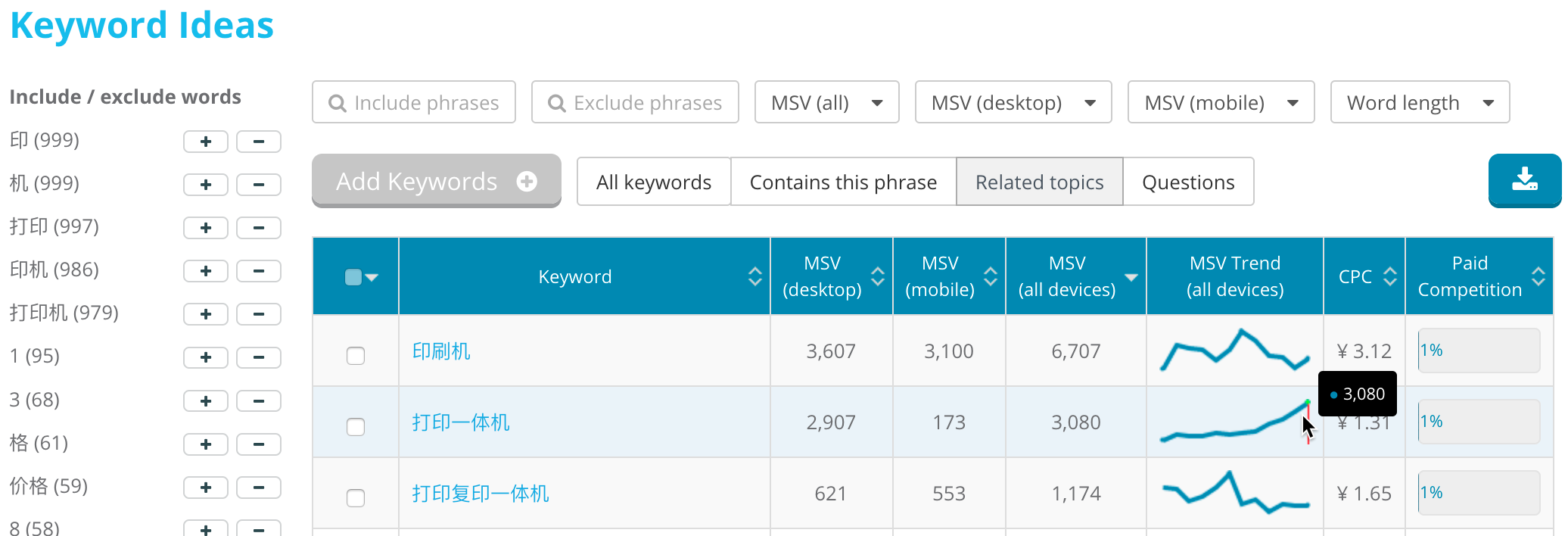
When looking at ranked keywords for any site, you’ll see MSV trends as here as well.
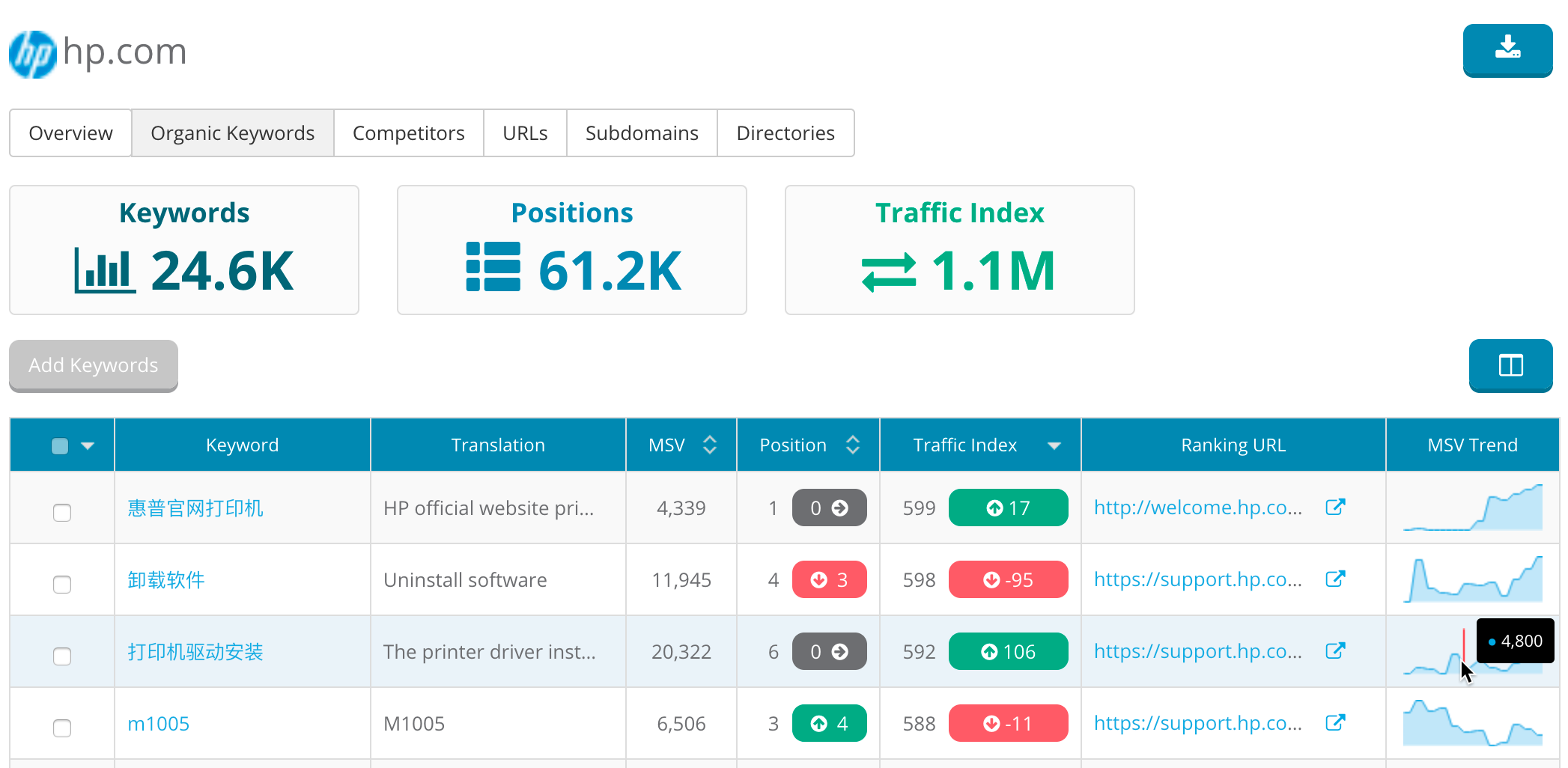
If a tracked keyword is already in our database, we’ll include MSV trends for all available months on the Keyword Ranking report (column hidden by default).
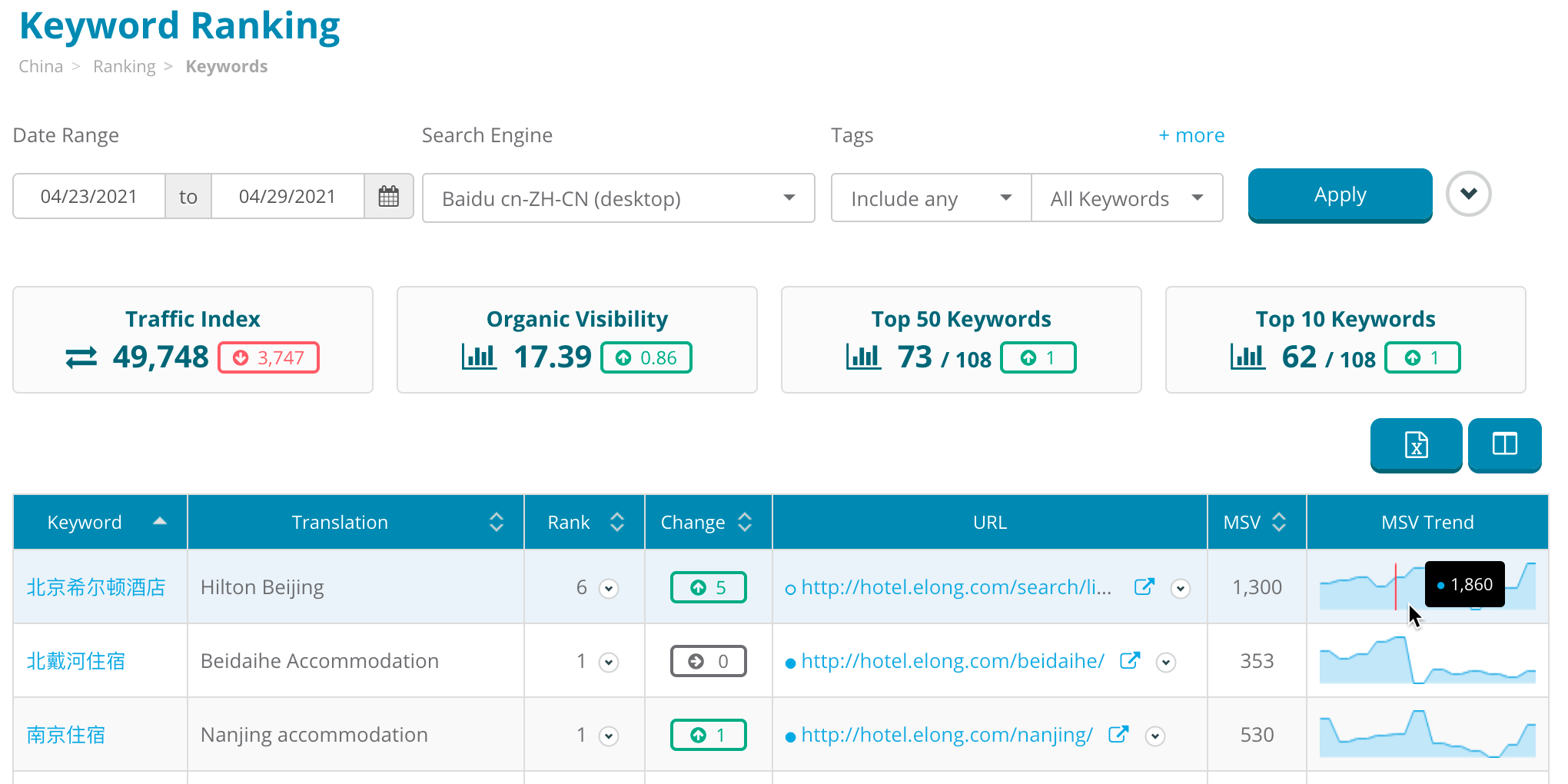
While trended data has always been available in Search Demand Trends, if the tracked keyword is in our database, we’ll backfill monthly search volumes for all available dates (at least 12 months to start).
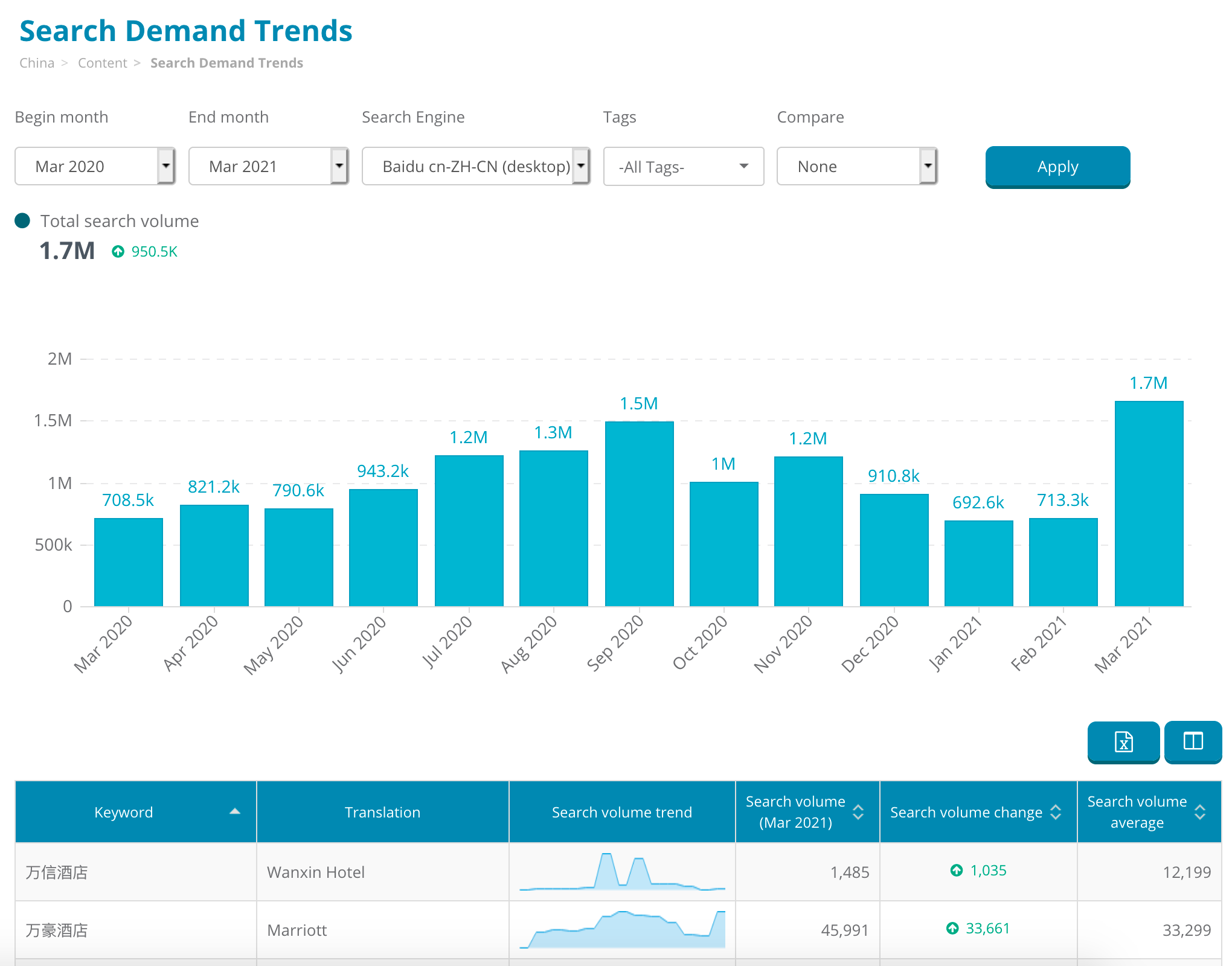
Those that have been waiting for this day may know why today’s announcement is no small feat, but others may be wondering just what the big deal is. Dragon Metrics and most other SEO tools have had this data for Google for years, why did it take so long to launch this for Baidu?
Optimizing for Baidu SEO is a completely different world than that of Google. Perhaps nowhere is this more clear than the difference in the availability of data of that you can get for Baidu compared to Baidu.
SEOs looking to do keyword research on Baidu have relatively few options. Baidu does have a keyword planner tool, but it’s only available to those that are actively buying ads on Baidu (which requires a company with a physical office in China). Even still, this tool is severely limited, and only data for the most recent 30 days is available.
Baidu Index is a close analog to Google Trends, and does have historic trended data. Unfortunately, the numbers shown here are relative metrics and don’t actually show monthly search volumes. You’re also limited to up to 5 keywords at once, it’s only in Chinese, and you’ll need a Baidu account to log in.
For years, Dragon Metrics Baidu keyword research tools have gone far beyond anything Baidu has provided. But the missing piece was always trended data. After all, if Baidu doesn’t make trended search volume data available, how could any tool show a history of keyword search trends?
Dragon Metrics already operates of database of millions of keyword rankings on Baidu, which powers several tools in the platform. For the past year, we’ve been collecting monthly search volume data for every one of these keywords on a monthly basis and caching them in our database. Twelve months later and we now have our first year of trended MSV data!
Of course, as with all things Baidu it wasn’t quite as simple as that. Baidu’s search volume data is plagued with inaccuracies. A brand’s keywords MSV may suddenly disappear one day, Baidu makes frequent unannounced and undocumented changes to their data sources, search volumes for millions of keywords may suddenly drop more than 90% one month, or one device’s search volume may be accurate while the other device’s data disappears for a month or two.
These inaccuracies have always been with us, but have been getting worse over the past few years. Without trend data, there are no other data points to compare to, making massive shifts in accuracy even more difficult to spot.
That’s one of the reasons why Baidu monthly search volume trends are so useful — they can help identify areas where Baidu is providing faulty data. But displaying this trended data also highlights these inaccuracies, making them even more noticeable.
To protect the integrity of the data, we’ve had to create sophisticated error detection and correction algorithms. Ensuring data accuracy turned out to be a far bigger job than simply collecting the data.
Ultimately, limits to these error-correction mechanisms still exist. While we continue to improve the reliability of the data, there are some keywords that we aren’t able to reliably provide trended data for. When this happens, we’ll still show what we belive to be the most accurate data available for the monthly search volume, but the trend will be hidden in the app.
There may also still be some anamolies left in the data for some keywords. We’re working to route this out as soon as we can, so plan to see future improvements coming in the near future.
Ultimately, all search volume numbers (whether Baidu, Google, or any other search engine) need to be taken with a fairly large grain of salt. No search engine is completely forthright with their search volume data. This doesn’t mean MSV isn’t an incredibly useful metric, but it is important to keep in mind that these numbers may be better off used as relative metrics rather than absolute ones when making decisions based on this data.
Today we’re launching with 12 months of history, but that’s not the end. We’ll continue adding to this every month as time goes on to bring customers even longer historic trends. We hope you’re as excited as we are.